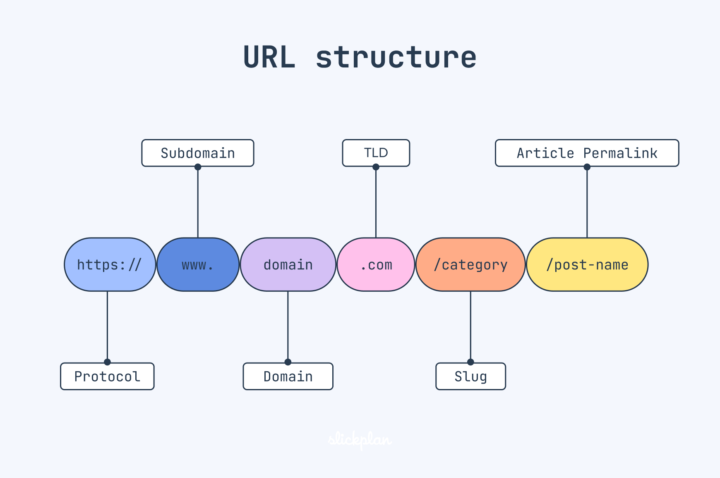The Quality Imperative: Why SEO Cannot Compromise on Excellence
The classic project management principle suggests you can optimize for two of three constraints: speed, cost, or quality. In SEO, this framework requires reconsideration. Unlike typical projects where trade-offs might be acceptable, search optimization operates in an environment where quality determines long-term viability. Understanding why quality must anchor every SEO decision separates sustainable programs from those destined for costly failure. Understanding Project Constraints in Search Optimization Traditional project management teaches that three variables govern outcomes: time, cost, and quality. The conventional wisdom holds that optimizing two forces compromise on the third. Organizations face familiar choices: deliver quickly and affordably while accepting lower quality, achieve excellence rapidly at higher cost, or maintain quality affordably by extending timelines. This framework appears in every industry. However, SEO presents unique characteristics that make standard trade-off thinking problematic. Search algorithms reward genuine value and penalize shortcuts. Recovery from poor-quality work costs more than doing it correctly initially. The competitive nature of organic search means mediocre execution produces no results rather than partial success. The interdependence of these variables matters more than the choices between them. Constraining one factor inevitably affects the others, creating ripple effects throughout the program. Organizations must understand these dynamics before making resource allocation decisions. How Time Affects Search Performance SEO operates on timelines that frustrate organizations accustomed to immediate results. Research indicates only two percent of pages reach top ten rankings within their first year. The average first-position page has existed for five years. For competitive queries generating significant revenue, achieving prominence can require years of sustained effort. However, timing dynamics vary based on query competitiveness. Pages ranking for higher search volume terms often do so within the first month if they will rank at all. This suggests that resource investment can influence speed to visibility, though not in ways that bypass fundamental requirements.
0
0

Five Enduring SEO Truths That Cut Through the AI Noise
The rapid integration of Artificial Intelligence into search has created a wave of anxiety, leading many digital marketing leaders to question the durability of their SEO strategies. While some influencers promote panic and "AI-proof" gimmicks, the data from Google’s front lines tells a different, more strategic story. The foundation of AI visibility remains firmly grounded in traditional SEO fundamentals. As Google representatives have confirmed, AI Overviews and AI Search Modes use Google Search for grounding, meaning the path to visibility in AI features runs directly through mastering the core principles of search engine optimization. For the Chief Digital Marketing Officer, the task is to distinguish between durable strategy and distracting noise. The following five truths provide a data-backed framework for building a resilient SEO strategy that thrives in the age of AI. 1. AI Overviews Are Not Devouring Breaking News (Yet) Despite the fear that AI will instantly synthesize and present all information, effectively eliminating the need for news publishers, AI Overviews are not yet replacing the need for real-time news sources. The current architecture of AI search features relies on the speed and authority of traditional search results. This means that for time-sensitive, breaking news, the established principles of News SEO—speed, transparency, and authority—remain paramount. The strategic takeaway is that brands with a strong editorial voice and a rapid publishing cycle will continue to be the primary source material that AI models use to inform their responses, not the other way around. 2. Your ‘Good Enough’ Core Web Vitals Are Probably Fine The pursuit of marginal gains in technical performance can often become a strategic distraction. While a poor Core Web Vitals (CWV) score is a clear barrier to entry, once a site achieves a "good enough" score, the return on investment for further micro-optimizations diminishes rapidly. The focus should shift from obsessing over the score itself to ensuring a genuinely positive user experience. A site that is fast, stable, and responsive enough to satisfy the user is a site that satisfies both Google’s ranking systems and the AI models that draw from them. The strategic investment should be directed toward content quality and semantic structure, not chasing the last few milliseconds of load time.
0
0

SEO Is Infrastructure, Not a Tactic
Too many organizations still approach SEO as an afterthought—something to layer onto an already-designed website, already-written content, or already-launched campaigns. This tactical framing is the root cause of underperformance, not a lack of technical skill or effort from SEO teams. The real barrier is structural: companies treat SEO as a marketing channel when it should be built as foundational infrastructure. Search is no longer about keyword targeting. It is about structuring your entire digital presence to be discoverable, interpretable, and aligned with how customers actually make decisions. When implemented correctly, SEO becomes the connective tissue linking content, product development, and performance marketing into a coherent system. Search Captures Intent-Driven Demand Search remains the most direct way to engage prospects who are actively signaling their needs. Unlike interruptive advertising, search connects you with people who have already declared what they want through their queries. The challenge is not generating this demand—it already exists. The challenge is building systems that capture it efficiently. When organizations structure their content and technical infrastructure to meet this demand, they reduce friction throughout the customer journey and create scalable mechanisms for demand capture. Search operates across the entire funnel, from initial awareness through consideration to conversion and post-purchase support. It reduces customer acquisition costs by meeting buyers on their terms rather than forcing them through predefined marketing funnels. Search also surfaces demand signals that never appear in CRM systems or paid media dashboards. It reveals how people actually describe problems, evaluate solutions, and compare alternatives. This intelligence is available in real time, but only if your infrastructure is designed to capture and act on it. The Cost of Treating Search as Tactical A large enterprise with a fifty-million-dollar annual paid search budget engaged us to analyze their visibility across the full buying journey. We examined 2.8 million keywords, mapping them to specific stages from initial discovery through implementation support. For each product line, we identified the types of queries users would enter at different phases and classified their organic and paid presence accordingly.
0
0

The Organizational Architecture of SEO Failure: Why Enterprise Search Strategies Collapse
A global consumer packaged goods company was losing twenty-five million dollars every month to cross-market search cannibalization. The technical solution was straightforward: properly implement hreflang elements to signal language and regional targeting to search engines. The cost to fix it was minimal compared to the losses. Yet eighteen months after identifying the problem, nothing had changed. This was not a failure of technical knowledge. The SEO team understood the issue perfectly. It was not a failure of resources—the company had ample budget and talented personnel. It was a failure of organizational design. Regional teams refused to cede control to a centralized solution. IT departments resisted licensing external tools. Marketing teams prioritized short-term metrics over long-term revenue protection. And executives, despite acknowledging the twenty-five million dollar monthly loss, viewed the problem as a Google issue rather than a business crisis requiring immediate intervention. This scenario illustrates a fundamental truth that most enterprise organizations still fail to grasp: the primary obstacle to SEO success is not algorithmic complexity or technical capability. It is organizational dysfunction. For Chief Digital Officers tasked with driving digital performance, understanding and addressing these organizational forces is not optional—it is the core challenge of the role. The Five Structural Forces That Undermine Enterprise SEO Force One: The Distributed Ownership Fallacy Many enterprises have embraced "distributed ownership" as a modern management philosophy. In theory, it empowers teams and encourages innovation. In practice, when everyone owns the website, no one is accountable for outcomes. Product teams own user experience. Brand teams own messaging. IT teams own the content management system. And SEO teams own... what exactly? This fragmentation creates a reactive, ticket-driven approach to optimization. SEO becomes an endless process of submitting requests, negotiating priorities, and accepting compromises. Strategic initiatives that require coordination across multiple teams fall through the cracks because no single person has the authority or mandate to connect the dots. The result is not collaboration but paralysis.
0
0

Strategic Image SEO: A Digital Marketing Framework
Image optimization directly impacts search rankings, user experience, and conversion rates. Organizations implementing strategic image SEO typically see 20-30% increases in organic traffic from image search while improving Core Web Vitals scores that influence overall rankings. Strategic Filename Optimization Descriptive filenames form the basis of effective image SEO. Search engines rely on textual signals to understand visual content relevance. Replace generic filenames like "IMG_1234.jpg" with strategic descriptions like "wireless-bluetooth-headphones-review.jpg" that incorporate target keywords naturally while maintaining readability. Use hyphens to separate words rather than underscores, as search engines treat hyphens as word dividers. Include relevant product names, categories, and descriptive terms that align with search intent. Alt Text Implementation Strategy Alternative text serves dual purposes: accessibility compliance and SEO optimization. Strategic alt text balances descriptive accuracy with keyword optimization, describing what images show and their purpose within content context. For product images, include brand names, model numbers, and key features. For informational graphics, describe the data or concept illustrated. Example: "Sony WH-1000XM4 wireless noise-canceling headphones on white background" provides specific product information while maintaining natural language flow. File Format and Compression Standards JPEG works best for photographs with many colors, offering good compression ratios. PNG suits graphics and logos requiring transparency. WebP provides superior compression, reducing file sizes by 25-35% without quality loss, though browser compatibility may require fallback options. Target file sizes under 100KB while maintaining acceptable visual quality. Image dimensions should match display size rather than relying on CSS scaling to prevent bandwidth waste and loading delays. Technical Implementation Requirements Width and height attributes in HTML prevent layout shifts during loading, improving Core Web Vitals scores. Lazy loading implementation defers below-the-fold image loading until users scroll, dramatically improving initial page speeds.
0
0

1-30 of 107

skool.com/seo-success-academy
Welcome to SEO Success Academy – the ultimate destination for business owners, digital marketers and agencies to master the art and science of SEO.
Powered by


